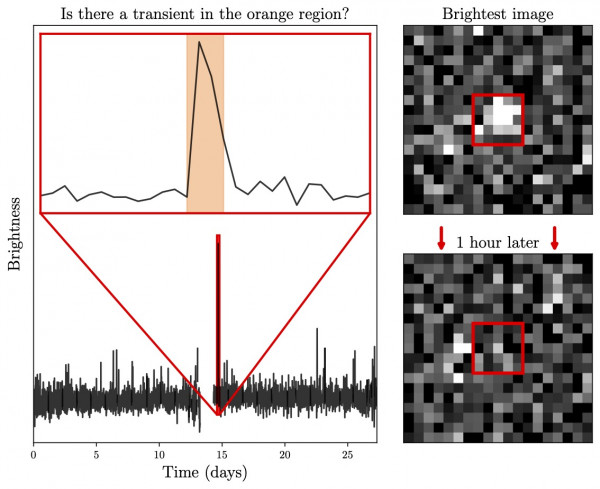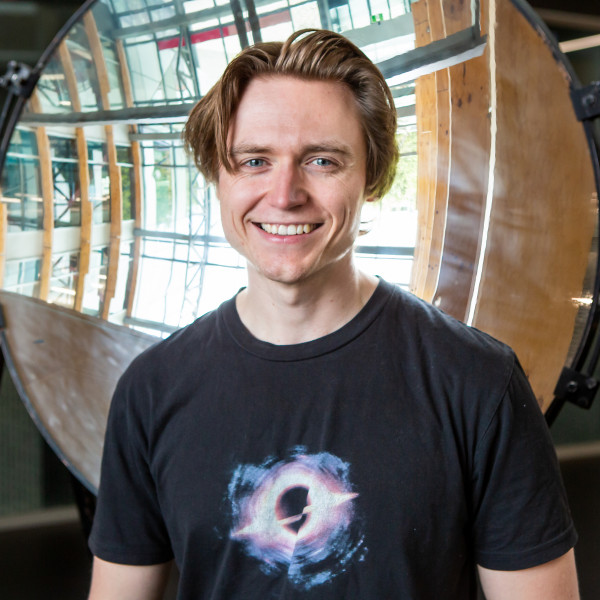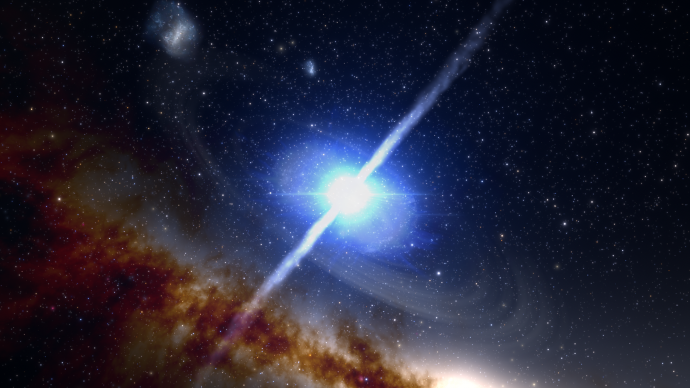Research
Published 8 January 2025Hunting Cosmic Cataclysms
In space no one can hear the explosion, but we can see it! Every second, countless cataclysms are playing out across the Universe with stars exploding, colliding, and doing other weird things.
Astronomers have catalogued almost all types of explosions that are visible for more than a few days, but very little is known about fast events. A new project supported by the Marsden Fund is searching for the fastest explosions in the Universe using NASA’s TESS Space Telescope, and you can help.
TESS has been observing the sky through rapid imaging for the last 6 years. This vast dataset can finally let us search for cataclysms in the universe that are visible from minutes to days. This search is an international effort: led from the University of Canterbury by Dr Ryan Ridden, with collaboration from Curtin University (Australia), Swinburne University of Technology (Australia), the Space Telescope Science Institute (USA), and Massachusetts Institute of Technology (MIT, USA). This international team has developed computer code to search the TESS dataset. However, checking the explosion candidates is a massive undertaking. To sort through the incredibly large number of candidates, they have set up the Cosmic Cataclysms citizen science project on Zooniverse.
In Cosmic Cataclysms you can help discover new types of explosions across the universe. Citizen scientists are shown a figure like the one below, which provides key information: how the brightness changes over time, and what the source looks like in the telescope image. From this figure, they then classify the type of object that has been detected. In this example, a fast explosion was discovered. In many cases, these citizen scientists will be the first people to see these cosmic cataclysms.

An example event from the Cosmic Cataclysms Zooniverse project. On the left is how the brightness changes over time where the orange-filled zone indicates where the code thinks something interesting happens. The quick rise and fall in brightness is indicative of a fast event. Images of the event as seen by TESS are shown on the right with the event located within the red box. This event is not visible after just one hour (Supplied).
With the Cosmic Cataclysms project, the team will build an “all-sky” map of things that change above us. The results from this project will also span a broad range of areas in astronomy, from studying asteroids in the Solar System, to discovering new variable stars, and even exoplanets.
This project is the culmination of 6 years of work. According to Dr Ridden, “This project has rocketed forward in recent years thanks to the amazing work from the students in my research group. It's incredibly exciting to finally be searching for these fast explosions, and particularly special to be doing it with the help of so many people.” In the initial closed tests for the Cosmic Cataclysms project, over 100 citizen scientists made thousands of classifications in just a few days. Now that the project is released to the public, it is anticipated that thousands of citizen scientists will contribute.

Dr Ryan Ridden (Supplied)
Finding objects is just the first step. Once citizen scientists classify the events, the research team will set to work identifying the precise source of the event and analysing all available data. Since nobody has yet thoroughly explored events that last less than a day, the team is expecting the unexpected. Regular updates on discoveries and progress will be posted through the Cosmic Cataclysms project on Zooniverse. With your help we can find every cosmic cataclysm observed by TESS.
Additional information: Cosmic Cataclsyms on Zooniverse
RESEARCHER
Dr Ryan Ridden
ORGANISATION
University of Canterbury
FUNDING SUPPORT
Marsden Fund Fast-Start
CONTRACT OR PROJECT ID
UOC2204: What physics powers the fastest explosions in the Universe?

